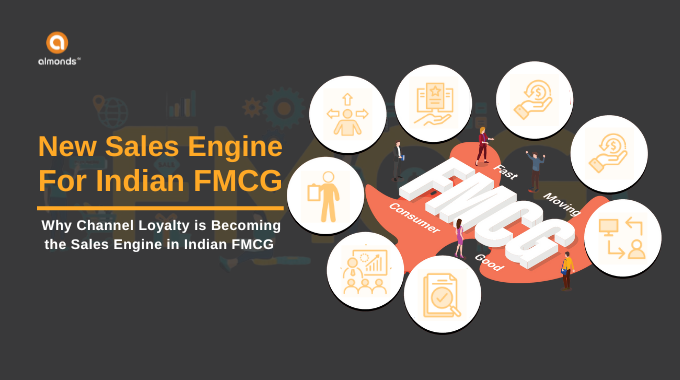In today’s hyper-competitive market, businesses rely heavily on loyalty programs—not just for consumers but also for channel partners. These channel loyalty programs drive long-term business relationships, increase sales, and ensure mutual growth. However, their effectiveness is underpinned by two critical factors: security and transparency.
As businesses become more data-driven, ensuring secure transactions and transparent processes within channel loyalty programs is more important than ever. Failing to address these aspects can erode trust and damage relationships, potentially leading to lost revenue and dissatisfied partners.
The Growing Importance of Channel Loyalty Programs
Channel loyalty programs go beyond traditional customer rewards programs. They are designed to incentivize and retain key business partners, such as retailers, distributors, and resellers. These partners are critical in getting products to market, driving sales, and expanding reach. When done right, a channel loyalty program strengthens business relationships, boosts sales, and encourages partners to promote a brand’s products over competitors.
Yet, as more businesses adopt these programs, there’s increasing pressure to ensure that data is secure and processes are transparent. Let’s dive into why these two elements—security and transparency—are vital in making channel loyalty programs successful.
Why Security is Non-Negotiable in Channel Loyalty Programs
Security breaches are not just a concern for consumer-facing companies; they pose a significant risk to B2B relationships as well. Channel loyalty programs often collect and manage sensitive data, including financial information, sales records, and partner details. Any compromise to this data could lead to financial losses, legal complications, and, more importantly, a breakdown in trust.
1. Protecting Sensitive Business Data
In channel loyalty programs, partners rely on the program to handle large volumes of sensitive data, from purchase histories to account details. Any data breach could have severe financial and reputational consequences for all parties involved. Implementing advanced security measures such as encryption and tokenization can reduce the risk of data breaches by replacing sensitive information with non-valuable tokens, rendering it useless to cybercriminals.
2. Preventing Fraud and Abuse
Fraud is another major concern for channel loyalty programs, particularly when large rewards or financial incentives are at stake. Unauthorized access to loyalty accounts or manipulation of reward points can result in financial losses for both the business and its partners. Multi-factor authentication (MFA), along with automated monitoring systems that detect suspicious behavior, can help prevent fraudulent activities and protect the integrity of the loyalty program.
3. Compliance with Data Regulations
As loyalty programs expand globally, businesses must also comply with various data protection regulations such as GDPR and CCPA. Ensuring that your loyalty program adheres to these regulations not only protects your business legally but also demonstrates a commitment to safeguarding partner data. Regular audits, secure data storage practices, and adherence to international data standards can ensure compliance and minimize regulatory risks.
The Role of Transparency in Building Trust
While security is crucial in protecting data, transparency plays an equally important role in building trust with channel partners. Transparency in your loyalty program means being open about the processes, reward calculations, and performance metrics. Partners need to feel confident that they are being rewarded fairly and accurately.
-
Clear Program Rules and Metrics
Transparency starts with clearly defined program rules. Channel partners must understand how rewards are earned, what metrics are used to track performance, and what actions they need to take to maximize their benefits. Clear communication eliminates confusion and ensures all participants know exactly how to achieve success.
-
Real-Time Access to Data
Providing real-time access to their performance data can strengthen trust among your channel partners. When partners can track their progress, view their transactions, and see their earned rewards at any time, it fosters a sense of fairness and accountability. This transparency keeps partners engaged and motivated to meet targets.
-
Transparent Reward Structures
Ensure that your reward structures are clearly defined and easy to understand. Ambiguous terms or complicated earning structures can lead to confusion and frustration among your partners. Clearly outline how rewards are earned, the value of each reward, and any conditions or timelines associated with redemption. Transparency in reward structures makes the loyalty program more engaging and helps eliminate potential misunderstandings.
Leveraging Technology for Security and Transparency
Security and transparency are not mutually exclusive; they work hand in hand to create a trustworthy loyalty program. Adopting advanced technologies such as blockchain and tokenization can elevate the security and transparency of your channel loyalty program. Blockchain technology provides a secure, decentralized ledger that records all transactions, making it nearly impossible to alter or tamper with the data. This not only ensures that data remains secure but also offers a transparent system where all parties can verify transactions.
Best Practices for Implementing Security and Transparency in Channel Loyalty Programs

-
Leverage Tokenization for Data Protection
Tokenization replaces sensitive data with unique tokens, securing information and reducing the risk of data breaches. This technology also enhances transparency by ensuring that all transactions are traceable and verifiable without exposing sensitive details.
-
Automate Reward Systems
Automating the process of reward distribution reduces the likelihood of human error and enhances the transparency of the program. Automated systems can ensure that rewards are distributed based on predefined, transparent criteria, eliminating disputes and confusion.
-
Educate Your Channel Partners
Educating your channel partners about the security measures and transparency protocols in place helps them feel more confident in participating in your loyalty program. This can be done through regular updates, training sessions, and clear communication of program rules.
-
Regular Audits and Monitoring
Conduct regular security audits and monitoring to ensure the integrity of your loyalty program. This practice will help identify potential vulnerabilities and demonstrate your commitment to maintaining a secure and transparent environment.
Conclusion
In the competitive landscape of channel loyalty programs, security and transparency are critical to building and maintaining trust with your partners. By prioritizing these aspects, businesses can create robust loyalty programs that not only protect sensitive data but also foster stronger, more transparent relationships with their channel partners.
Incorporating best practices such as tokenization, automation, and real-time data access into your channel loyalty program can enhance trust, improve engagement, and ultimately, drive the success of your business. Secure, transparent loyalty programs are not just a trend—they are the future of effective channel partner relationships.







